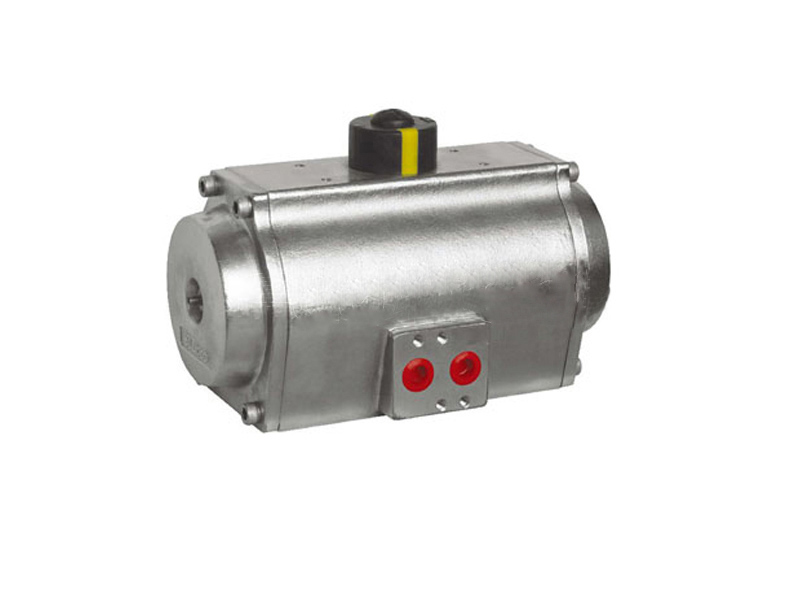Diaphragm pneumatic actuators can be applied to various adjustment true/false occasions. Different models have different power outputs, providing many choices for various pressure occasions.
The membrane type pneumatic actuator adopts a multi-spring structure, which is relatively light in weight, and all parts are compact, with strong flexibility, and can be seamlessly used in other parts of the valve. At the same time, the pneumatic actuator is also sturdy and durable, has a long service life, and the maintenance cost is also very low, basically it can be said to be maintenance-free. With the rotating diaphragm structure used, the effective area during the movement is constant, which can ensure that the pneumatic actuator has a high accuracy, and then, it is easy to install the accessories.
Pneumatic actuators
Working principle of membrane pneumatic actuator:
When gradually increasing the air intake into the pneumatic actuator, push the diaphragm and spring, and when the pressure starts to decrease, the diaphragm and spring will move in the opposite direction and return to the original position. When the load is relatively high, a spring can be added (this is the flexibility of the actuator).
The locking ring of the pneumatic actuator allows the actuator to be installed on the cover of the control valve. Make sure the ruler indicates the position of the valve stem.


 customer service1
customer service1  customer service2
customer service2 